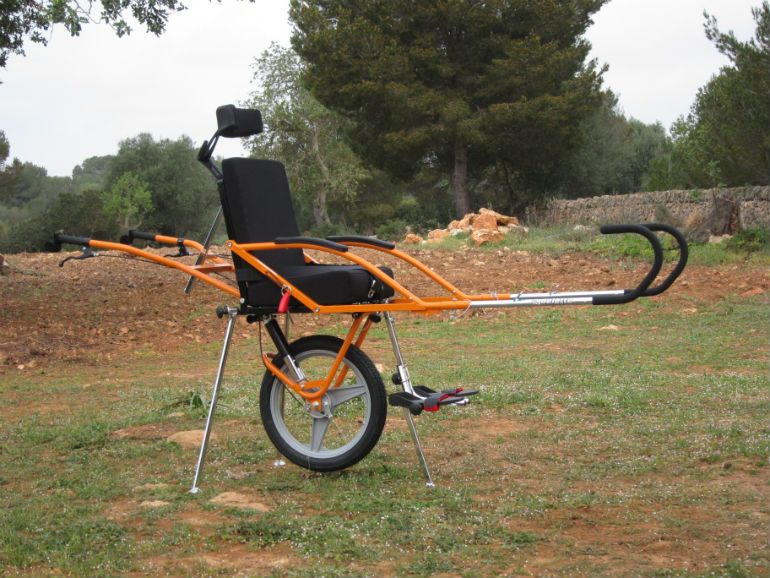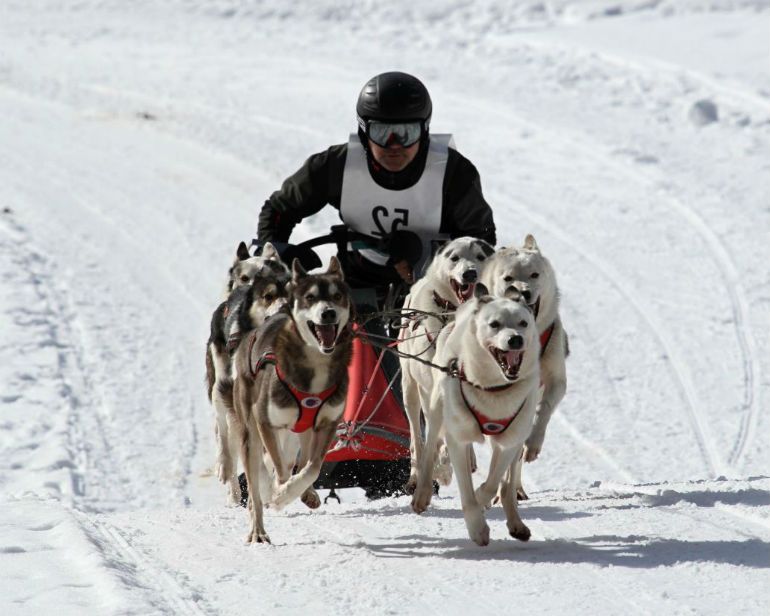Share:
Take it offline!
This Education in Motion resource is also available as a printable PDF.
Download PDF
What better way to make the most of the cooler months than to set out on a snowy adventure? Winter sporting activities can be a lot of fun, and they’re a great way to stay active. Many winter activities can be difficult for people with disabilities. Luckily, there are adaptive options that can help to make them more accessible.
Ice Skating
Nothing says winter fun quite like a trip to an ice rink! Ice skating is a cold weather classic all around the world, and it’s a great way to burn off some energy before warming up with a well-earned cup of hot chocolate. Ice skating is often assumed to be a non-adaptive sport, but Australia is home to some fantastic accessible ice rinks. Many of these rinks offer skating sessions that cater directly to wheelchair users.
Check out these adaptive ice skating spots:
Skiing
Skiing is a winter sport must-do, and luckily, Australia has plenty of options when it comes to making it disability accessible. Disabled Wintersport Australia (DWA) offers a range of ski education and guidance programs in Victorian and New South Wales alpine regions to help make skiing possible for people with disabilities. They can provide adaptive equipment for both standing and sitting skiers. Equipment options include:
Stand-Up Skiers
- Outriggers are adapted crutches with ski tips attached to their bases. These ski tips can be flipped up if the crutches need to be used in lift lines, and down into the ski position to help with balance and turns.
- 4-Track skiers are those who use crutches or a walking frame to help maintain balance. These skiers may also need to use a tip clamp to keep their two skis together. According to DWA, 4-Track skiing may be suitable for people with cerebral palsy, multiple sclerosis, muscular dystrophy, post polio, or spina bifida.
- 3-Track skiers are standing skiers who ski on one leg with stand-up outriggers. These skiers may include people with a leg amputation or post polio.
- The Snow Slider is like a skiing walking frame. It has handles and forearm rests, and it is tethered by a guide or instructor, who can provide skiing support. It is designed for use on easy terrain.
- Tip Clamps are clamps placed on the tips of a set of skiers and connected by a chain. These help to keep ski tips close, and if a guide or instructor attaches tethers to them, skiers are often better able to control their speed and direction.
Sit-Skiing
- A bi-ski is a modified, padded seat (or ‘bucket’) attached to two skis. Bi-skis are designed to be stable with a low centre of gravity, and skiers are positioned close to the snow. Guides or instructors can help to control skiing speed and direction by holding or attaching tethers to the bucket. Bi-skis are designed for easy lifting into chairlifts.
- A mon-ski is a modified, padded seat attached to just one ski. It is best for more advanced skiers, as it has a higher centre of gravity than a bi-ski and a thinner, longer ski for improved speed and agility. Mono-skis also include shock absorbers and suspension systems.
- A dual-ski is like a mono-ski in that it has a shock absorber and longer skis. However, a dual-ski has two attached skis, giving it greater stability.
Snowboarding
Adaptive snowboarding is a great way to enjoy the snowy weather. Members of DWA can access the Sno-Wing, an adaptive training device that makes snowboarding with a disability possible. The Sno-Wing is designed to help guides/instructors maintain control of participant movements while snowboarding. It is suitable for people with a range of disabilities.

Disc Golf
Disc golf is one of the world’s most accessible sports, and at Victoria’s Threadbo, winter is the perfect time for a snowy game! Disc golf has similar rules to traditional golf, disc golf, but it uses Frisbees or discs instead of balls. Players throw the disc from a tee area, aiming to get their disc into an elevated basket in the least amount of throws possible. Disc golf is a great inclusive activity for people of all ages and abilities.
Dog-Sledding
Dog-sledding isn’t an obvious choice when it comes to winter sports in Australia, but there are some disability-friendly options available, and the experience can be a lot of fun! Based at Mt Buller in Victoria, Australian Sled Dog Tours don’t advertise as a disability-focussed experience, but in the past, they have helped people with disabilities to take part in dog-sledding tours. Most of the huskies used by the company are rescue dogs, and staff are helpful when it comes to accommodating additional needs.

Hot Air Ballooning
There’s nothing quite like admiring all of Australia’s winter beauty from the sky! Often, hot air ballooning is an inaccessible activity because participants are required to climb into the basket before take-off. However, Global Ballooning Australia has access to Australia’s very first Easy Access Basket. This basket includes an accessible door, enabling participants with a wide range of disabilities to enter and exit the hot air balloon easily. The Easy Access Basket also incorporates personalised seating, harness and a grab handle, making it a great adaptive option. Global Ballooning Australia is located in Melbourne.
Could you use some more help to make wintersports accessible for you? Disabled Wintersport Australia is an inclusion-focused organisation with members ranging from amateur skiers to Paralympic champions. The organisation offers a number of disability adaptive programs, services and equipment pieces to members.